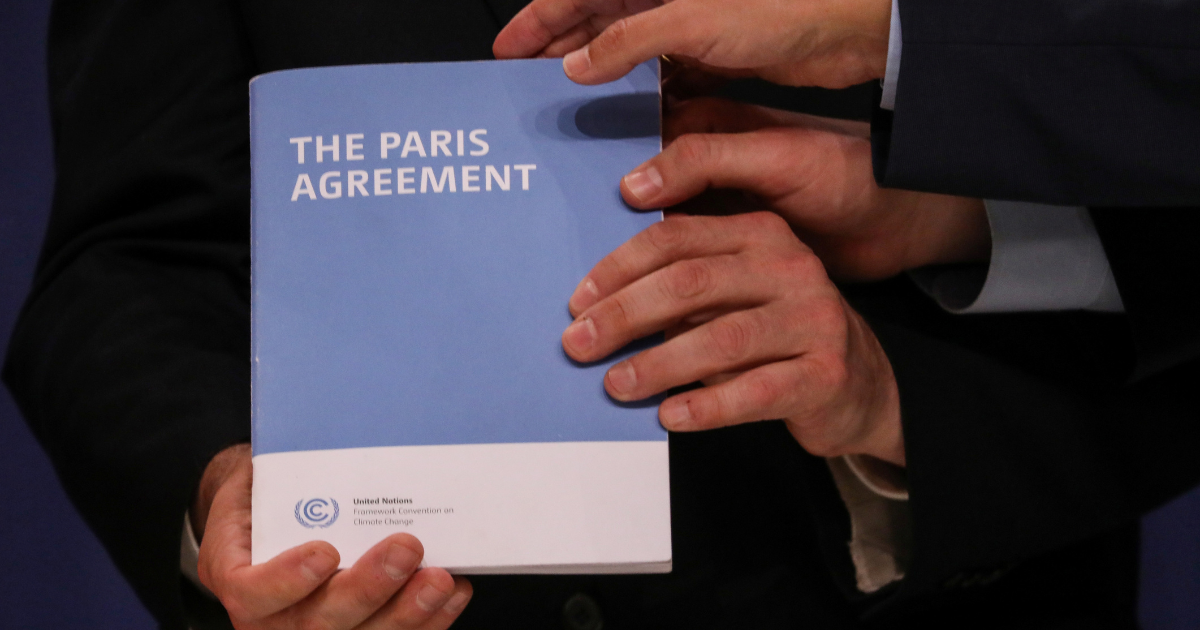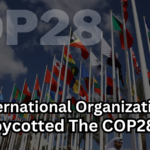The Paris Agreement on Climate Change represents a crucial turning point in global efforts to address the urgent threat of climate change. Adopted by 196 participants at the UN Climate Crisis Summit in Paris. This legally binding international treaty aims to combat Global Warming and limit the enhancement in global average temperature to well below 2°C above pre-industrial levels, with a goal to limit it to 1.5°C.
The requirement to limit global warming to 1.5°C by the end of this century has been emphasized by world leaders, as it is seen as a critical threshold for avoiding the most severe impacts of climate change. The Paris Agreement sets out a roadmap for achieving this goal, including the need to peak greenhouse gas emissions before 2025 and reduce them by 43% by 2030. This landmark agreement marks the first time that all nations have come together to combat climate change and adapt to its effects.
What Does The Paris Agreement Do For Climate Change?
This agreement marks a huge turning point in the world’s efforts to tackle climate change. It brings together nations from all over the world to commit to reducing their greenhouse gas emissions and fostering a sustainable future for all.
The Paris Agreement on climate change emphasizes the significance of the actions taken by each nation and their shared responsibility to combat climate change. It highlights the importance of innovation, investment, and cooperation to combat climate change’s harmful effects. The Paris Agreement is a crucial tool in the battle against climate change, offering hope that we can save our planet for future generations with collective action.
What Are The Five Main Points of The Paris Agreement?
1. Temperature Limitation
- Pledge to limit the rise in global temperatures to below 2°C compared to pre-industrial levels and strive for even lower temperatures, within 1.5°C
- 2°C is the threshold to limit potentially catastrophic climate change
2. Universal Climate Agreement
- World’s first comprehensive climate agreement involving all countries
- The agreement is legally binding
3. Helping Poorer Nations
- Developed nations are expected to provide $100 billion annually to developing countries by 2020 to combat climate change and foster greener economies
- The deal promotes universal access to sustainable energy in developing countries, particularly in Africa
- Canada has committed to spending $2.65 billion over five years to help developing countries reduce their emissions and adapt to climate change
4. Publishing Greenhouse Gas Reduction Targets
- Countries are required to prepare, maintain, and publish their greenhouse gas reduction targets, which should be greater than the current ones and reflect the highest possible ambition
- Targets will be reviewed and revised every five years starting in 2023
- Each country should strive to reduce its carbon output as soon as possible
5. Carbon Neutral by 2050?
- The goal is to achieve a carbon-neutral world sometime after 2050 but before 2100
- This means limiting the amount of greenhouse gasses emitted by human activity to the levels that nature can absorb
- Scientists believe that the world must stop emitting greenhouse gasses in the next half-century to achieve this goal
How Many Countries Signed The Paris Agreement on Climate Change?
At present, the Paris Agreement on climate change has received endorsement from 194 entities (193 nations along with the European Union).
Is The Paris Agreement Successful?
According to specialists, the effectiveness of the Paris Agreement is doubtful in limiting the global average temperature increase to 1.5°C. As a result, the planet will experience catastrophic outcomes, including scorching heat waves and catastrophic floods.
Despite the fact that the Paris Agreement is a significant step toward global cooperation on climate change, it is insufficient to address the magnitude of the problem.
Consequently, policymakers and stakeholders must work together to take more aggressive measures to mitigate the consequences of climate change. We must ensure that we do not go beyond the temperature threshold and trigger uncontrollable climatic events.
What is The Paris Agreement Short Answer?
This Agreement is a global agreement based on climate change. It was adopted in 2015 by 196 countries.
The Paris Agreement on climate change intends to restrict the rise in worldwide temperatures to below the threshold of 2 degrees Celsius, above pre-industrial levels. Countries are required to set their own emissions reduction targets and report on their progress.
The Paris Agreement on climate change also includes financial assistance for developing countries to support their climate change efforts.






